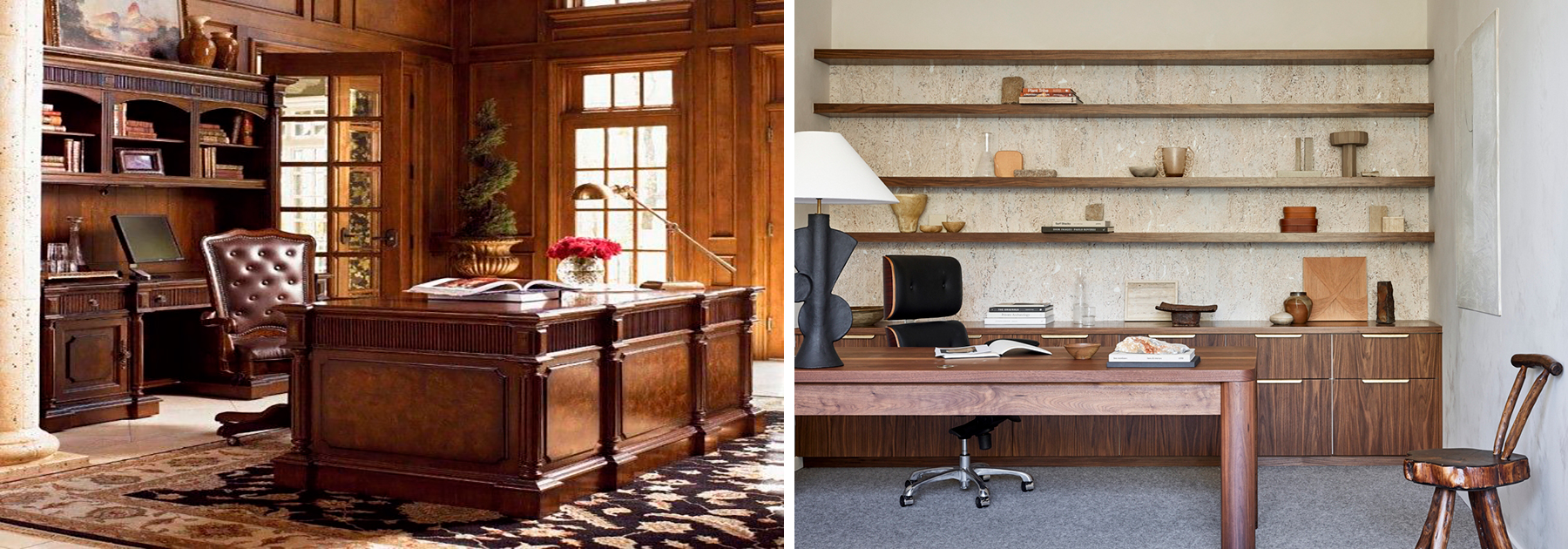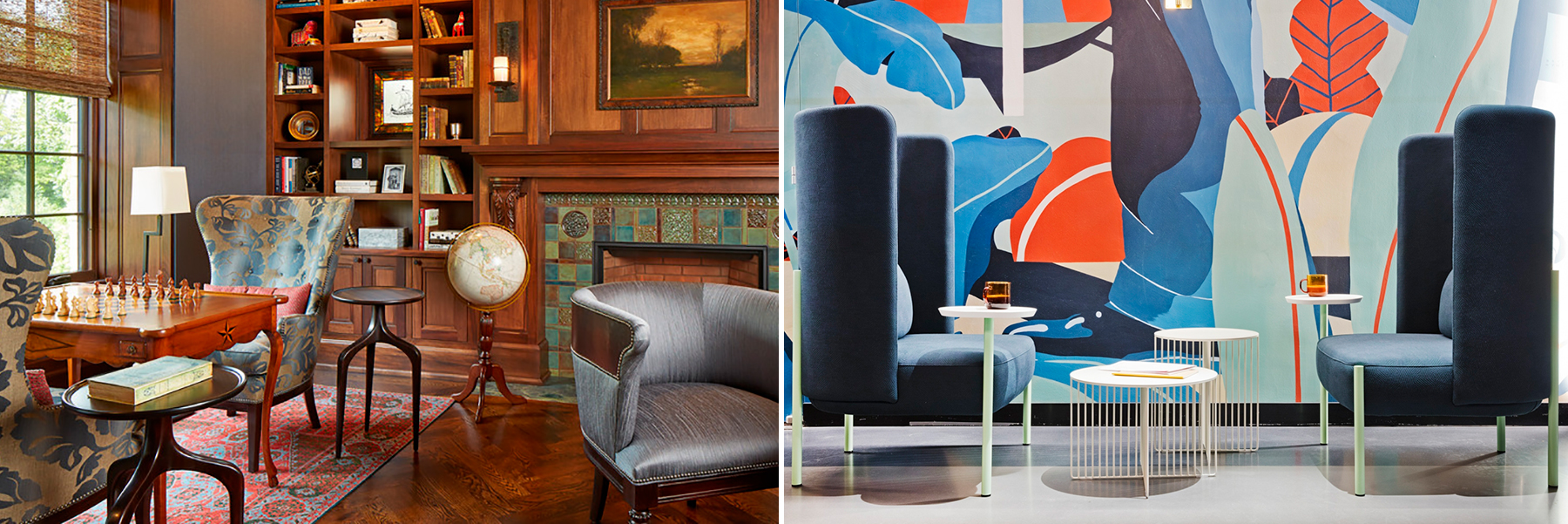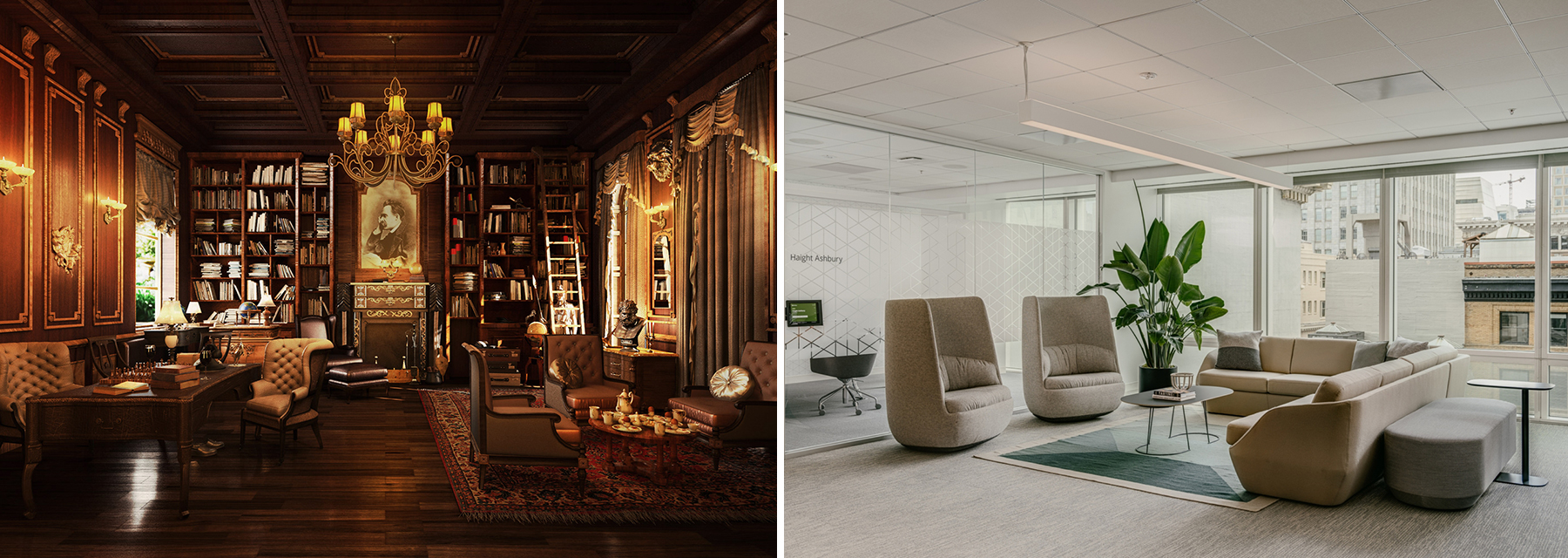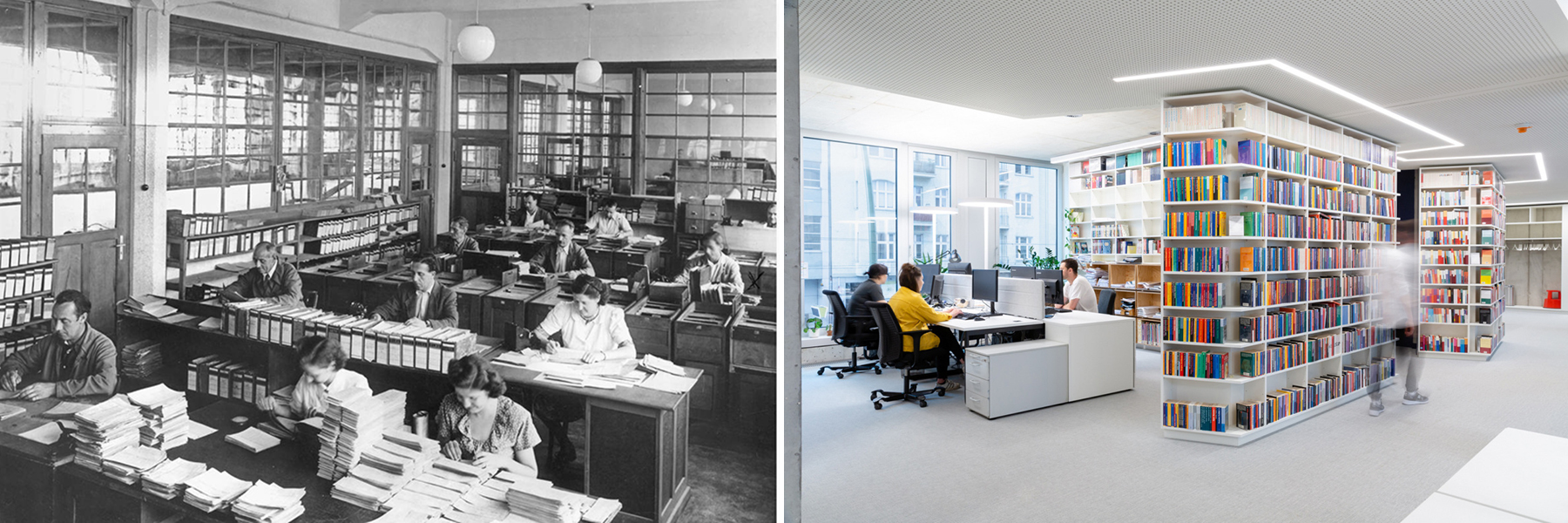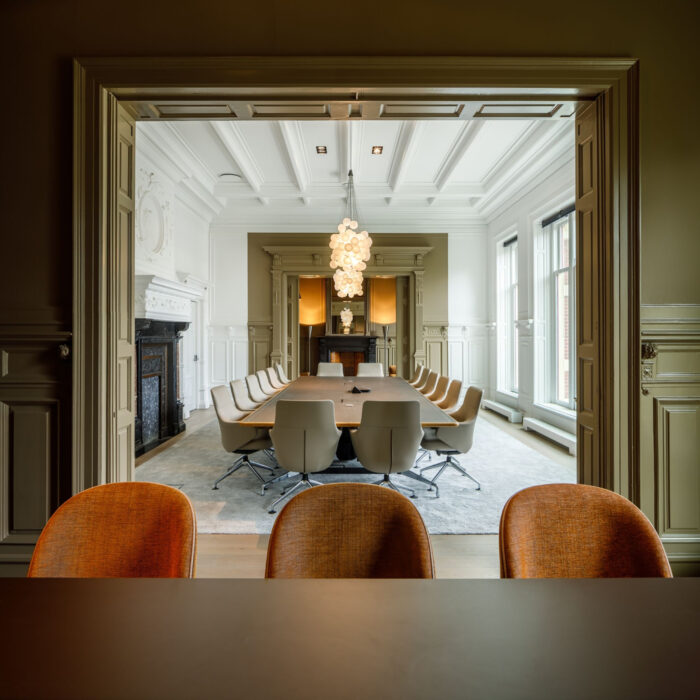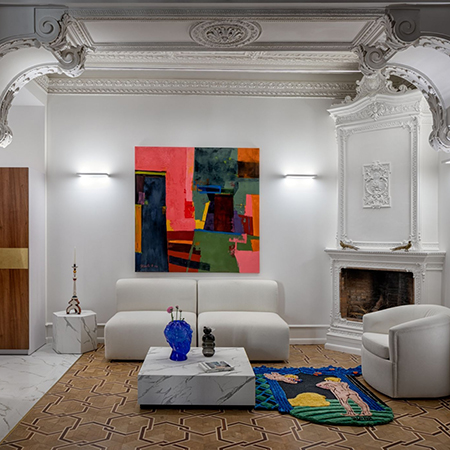How offices have changed in the last 100 years: aesthetics, functionality and sustainability.
To launch this new year 2023, we wanted to do a style exercise comparing the offices from the first half of the XNUMXth century with the current offices, almost 100 years later.
Not only the aesthetics have changed in a palpable way, but also the functionality and distribution of the work spaces. And it is that the very concept of "office" it has been transformed for the better, in less inhospitable, healthier and more sustainable places.
The change is evident to the eye, but we want to delve into the reasons that have led to this radical transformation in the last century.
Space, that precious commodity
One of the main aspects that have changed radically is the "work space", that is, offices as places where only and only one will work productively, without taking into account the spatial conditions of the worker. It took several decades for the socio-labour studies, medical and neurological found that work environments directly affected the worker productivity and well-being.
This simple premise, which today seems obvious to us, in the last century was an absolutely dispensable aspect, since the maximization of space prevailed without considering the conditions of square meters per worker, nor the separation necessary to carry out the work properly. Other no less important aspects such as the natural and artificial lighting, the flexibility of work furniture, the integration of botanical elements or the use of organic, sustainable and healthy materials They have been incorporated over the years in the great revolution of modern offices.
New arrangement of jobs
Images of the offices of yesteryear with long rows of desks with tie-clad officials working piecewise in production chain mode are frequent. Today these spaces, somewhat sinister, where you hear nothing but the typing of the machines, are inconceivable. Thanks to the introduction of flexibility concept, the work spaces are no longer those rooms organized in martial formation. He new furniture office favors modular compositions in more organic and less limited dynamic centers, with the possibility of adding accessories that help compartmentalize aesthetically. the options of regulate the height of the table, the screen, the Retro American and other elements promote better organized, comfortable and ergonomic spaces.
office tables
Undoubtedly, the aesthetics of the old officess has taken a significant turn. The sturdy desks, oak, walnut or chestnut, have given way to much lighter designs, that they have not dispensed with noble wood in their invoice. However, we have to keep in mind that the desks were symbols of power, not a simple piece of furniture. His size and regal appearance were in keeping with the authority and economic level of its owner. Likewise, the leather armchairs with quilted padding have given way to more comfortable chairs, less heavy and easy to handle, with technical fabrics that allow adequate perspiration.
Living areas inside the office
Of the few things that have changed in a century, it has undoubtedly been the need to have a seating area within executive offices. Basically, they still have the same elements: a sofa, a coffee table and a couple of armchairs. However, the tufted upholstery, so much in English taste, has been replaced by more modern fabrics in sofas with straight lines and ergonomic armchairs. have also been replaced persian or zebra rugs, for smooth carpets or woolen rugs that are warmer and less musty. The electronic devices and screens also today they occupy a prominent place where before there was probably a portrait of a famous ancestor.
The new version of wingback seats
The wingback seats they are a piece of furniture as loved as they are hated. Those who do not want to give them up say that they are extraordinarily comfortable, that they are as valuable for having a good private conversation as for reading or taking a nap. They make sure you can isolate easily from everything that happens around you thanks to its enveloping backrest that covers up to the head. So, if we thought that they had already disappeared from the world of interior design, we were very wrong. In many modern offices we can find XNUMXst century versions of these comfortable seats, which exactly comply with their enveloping, comfortable and private functionality.
Let there be light!
Why has it taken us so long to integrate the natural lighting in interior design? Now we love light and bright spaces, with large windows and, in general, light materials and upholstery. But everything has its explanation. The ancestral taste for coverings and boisseries of wood has its origin in the need to protect the heat of the stay; hence also the use of carpets and thick curtains to prevent the cold from penetrating. Nowadays, thanks to the window closing systems and the air conditioning of the rooms, we can afford to have large windows without fearing the interior temperature. Something similar happens with the dark upholstery, more "suffered" than clear ones, at a time when there were no stain-resistant fabrics or cleaning systems for upholstery. In fact, white was shunned because it was short-lived and aged badly and dirty. It makes sense, doesn't it?
Meeting rooms: from solemnity to minimalism
The first commercial offices appeared during the industrial development in the United States and England, although in palaces, libraries and institutional buildings there were already spaces dedicated to office, generally occupied by notaries. With the advent of the telegraph, the telephone, typewriter and electricity, and the expansion of foreign trade, banking and other work models, such as the civil service, a new labor system began, grouping a group of people in specific spaces.
Therefore, the needs and spaces that exist in offices today were much smaller, since people only went to the office to work and all that was needed was a desk. However, in movies from the 30s and 40s, especially those that dealt with the great crisis of 29, you can see solemn boardrooms where recently bankrupt bankers met, just before throwing themselves out of the window of a skyscraper. This tells us that meeting spaces They were born almost at the same time as the common work areas and were attached to the management offices. Today, of course, these rooms still exist, although with a vocation more open, transparent and democratic.
Auditoriums and meeting points
As in the case of meeting rooms, meeting spaces have always existed, but they are becoming more and more important and are not an appendage to work facilities, but rather integrated areas, often even central ones. Formerly the meeting spaces were made in churches or town halls, but as more communication and information needs were generated (conferences, assemblies, conventions, training, etc.), these meeting spaces, essential today in offices, were perfected. Of course, with a completely different aesthetic, less rigid and corseted.
Goodbye paper!
La classification and archiving of office supplies was a real headache for furniture designers in the XNUMXth century: metal filing cabinets, shelves, shelves, shelves, drawers... Although all of this still exists, of course, it has been simplified with more comfortable and functional modular systems, that favor the visual arrangement of office spaces. And, of course, the digital world and the cloud have helped us enormously to eliminate the stacks of sheets on the table and the folders stacked on the shelves. Technology, as in everything, has also done its job.
Photos: officesnapshots


